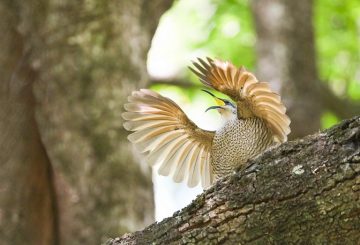Sự kiện đua xe SailGP ở Lyttelton, dự kiến vào cuối tuần, đã bị hủy bỏ vào ngày đầu tiên do nhìn thấy một con cá heo trên sân. Cuộc đua được cho là bắt đầu vào khoảng 3 giờ chiều, nhưng đã bị trì hoãn và cuối cùng bị hủy bỏ khi cá heo không rời khỏi khu vực ngay cả sau hai giờ.
Andy Thompson, giám đốc điều hành của SailGP, gọi đây là “một ngày khó khăn” cho cả thủy thủ và người hâm mộ. Anh bày tỏ hy vọng rằng điều kiện sẽ tốt hơn vào ngày hôm sau để F50s đua và làm hài lòng người hâm mộ.
Trước sự kiện này, những lo ngại đã được nêu ra về cá heo của Hector, được liệt kê là dễ bị tổn thương trên toàn quốc. Hai trong số những con cá heo này đã được nhìn thấy trong vòng 300 mét từ thuyền trong cuộc đua cuối cùng vào năm 2023. Mặc dù được yêu cầu dừng cuộc đua, giám đốc sự kiện cho phép nó tiếp tục. Điều này dẫn đến việc bổ nhiệm một người ra quyết định độc lập cho sự kiện năm nay, có nhiệm vụ dừng cuộc đua nếu có bất kỳ con cá heo nào được nhìn thấy.
Kế hoạch quản lý động vật có vú của sự kiện nói rằng cuộc đua không thể tiếp tục cho đến khi ít nhất 20 phút trôi qua kể từ khi một con cá heo được nhìn thấy lần cuối trong khu vực đua. Điều này là do các cuộc tấn công bằng thuyền có khả năng gây tử vong cho cá heo.
Việc hủy bỏ cuộc đua đã làm dấy lên sự thất vọng trong người hâm mộ, những người đã bày tỏ sự thất vọng của họ trên các kênh truyền thông xã hội của SailGP. Mặc dù vậy, Grace Uivel từ Ata Ceramics đã ca ngợi sự kiện này, nói rằng nó thật tuyệt vời cho thị trấn và đã mang đến rất nhiều du khách thân thiện.
Tuy nhiên, Giám đốc điều hành của SailGP, Russell Coutt, cho biết sự kiện này sẽ không trở lại Christchurch vào năm tới do “lợi ích thiểu số” khiến mọi thứ trở nên quá khó khăn. Uivel không đồng ý, nói rằng cả cộng đồng và SailGP đã làm việc tốt với hapū Ngāti Wheke địa phương và Sở Bảo tồn.
Người ủng hộ bờ biển Genevieve Robinson lập luận rằng cuộc đua hoàn toàn không nên diễn ra trong thời gian này trong năm, vì đây là mùa đẻ chính của cá heo của Hector. Bà lưu ý rằng những con cá heo này rất dễ bị tổn thương ở giai đoạn này và các hoạt động của con người, chẳng hạn như đánh bắt cá, đang gia tăng áp lực lên quần thể của chúng. Theo Bộ Bảo tồn, 17 con cá heo của Hector đã chết ở Đảo Nam kể từ tháng 9, trong đó 10 người trong số đó là do tàu đánh cá thương mại.



























































